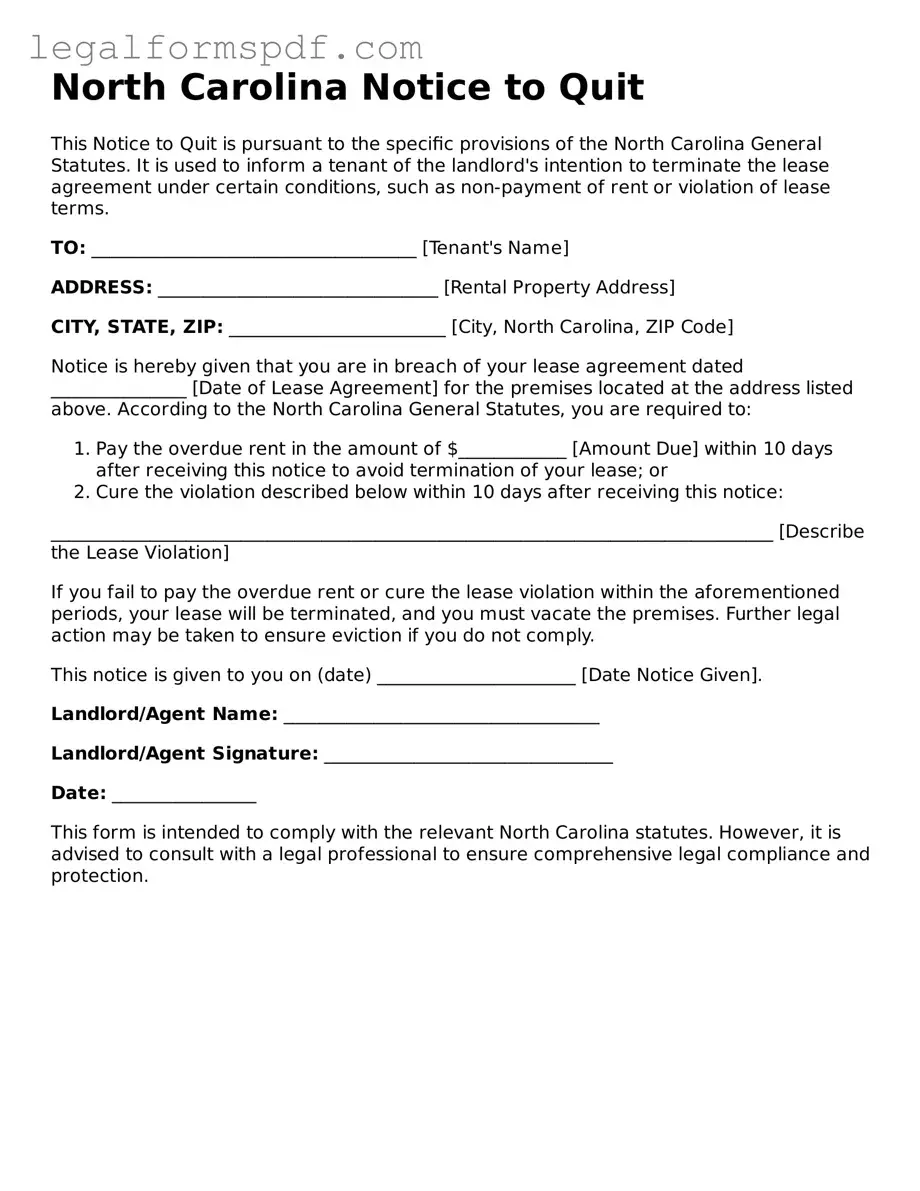North Carolina Notice to Quit
This Notice to Quit is pursuant to the specific provisions of the North Carolina General Statutes. It is used to inform a tenant of the landlord's intention to terminate the lease agreement under certain conditions, such as non-payment of rent or violation of lease terms.
TO: ____________________________________ [Tenant's Name]
ADDRESS: _______________________________ [Rental Property Address]
CITY, STATE, ZIP: ________________________ [City, North Carolina, ZIP Code]
Notice is hereby given that you are in breach of your lease agreement dated _______________ [Date of Lease Agreement] for the premises located at the address listed above. According to the North Carolina General Statutes, you are required to:
- Pay the overdue rent in the amount of $____________ [Amount Due] within 10 days after receiving this notice to avoid termination of your lease; or
- Cure the violation described below within 10 days after receiving this notice:
________________________________________________________________________________ [Describe the Lease Violation]
If you fail to pay the overdue rent or cure the lease violation within the aforementioned periods, your lease will be terminated, and you must vacate the premises. Further legal action may be taken to ensure eviction if you do not comply.
This notice is given to you on (date) ______________________ [Date Notice Given].
Landlord/Agent Name: ___________________________________
Landlord/Agent Signature: ________________________________
Date: ________________
This form is intended to comply with the relevant North Carolina statutes. However, it is advised to consult with a legal professional to ensure comprehensive legal compliance and protection.
